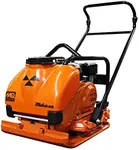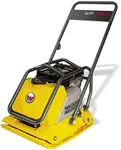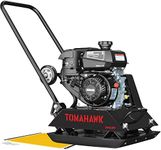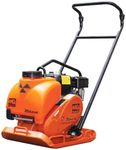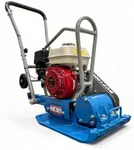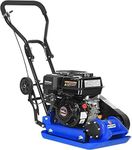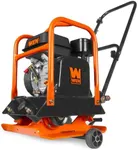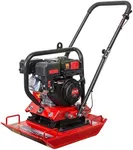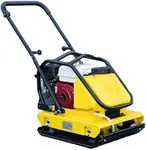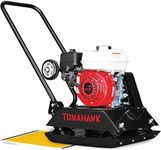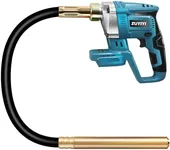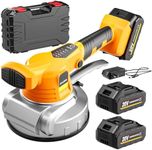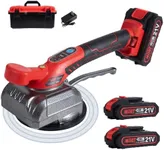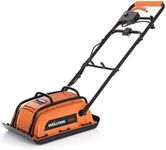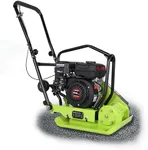Buying Guide for the Best Plate Compactors
When choosing a plate compactor, it's important to consider the specific needs of your project. Plate compactors are essential tools for compacting soil, gravel, and asphalt, ensuring a stable and even surface. The right plate compactor can make a significant difference in the quality and efficiency of your work. Here are some key specifications to consider when selecting a plate compactor.Plate SizeThe plate size refers to the dimensions of the compactor's base plate, which directly impacts the area it can cover in a single pass. Larger plates cover more ground quickly, making them ideal for large projects, while smaller plates offer better maneuverability in tight spaces. Choose a plate size that matches the scale of your project: larger for extensive areas and smaller for confined or intricate spaces.
Centrifugal ForceCentrifugal force is the amount of force the compactor exerts on the ground, measured in pounds or kilonewtons. This force determines how effectively the compactor can compress the material. Higher centrifugal force is suitable for compacting thicker or denser materials, while lower force is adequate for lighter tasks. Assess the type of material you'll be working with and select a compactor with the appropriate force to ensure optimal compaction.
Engine PowerEngine power, measured in horsepower (HP) or kilowatts (kW), affects the compactor's performance and efficiency. More powerful engines can handle tougher jobs and longer operating periods without overheating. For heavy-duty or professional use, opt for a higher-powered engine. For smaller, occasional tasks, a lower-powered engine may suffice. Match the engine power to the intensity and frequency of your compaction needs.
Vibration FrequencyVibration frequency, measured in vibrations per minute (VPM), indicates how often the plate vibrates to compact the material. Higher frequencies are better for finer materials like sand, while lower frequencies are more effective for coarser materials like gravel. Consider the type of material you'll be compacting and choose a compactor with a suitable vibration frequency to achieve the best results.
Travel SpeedTravel speed refers to how quickly the compactor moves across the surface, usually measured in feet per minute (FPM) or meters per minute (MPM). Faster travel speeds can increase productivity on large, open areas, while slower speeds provide more control and precision in smaller or more detailed workspaces. Determine the balance between speed and control that your project requires and select a compactor with an appropriate travel speed.
WeightThe weight of the plate compactor affects its ease of use and the depth of compaction. Heavier compactors provide deeper compaction and are better for tougher materials, but they can be more challenging to maneuver. Lighter compactors are easier to handle and transport but may not compact as deeply. Consider the material and depth of compaction needed for your project and choose a weight that balances effectiveness with ease of use.
Handle DesignThe handle design impacts the comfort and control of the compactor. Ergonomically designed handles reduce operator fatigue and improve maneuverability, especially during extended use. Look for features like vibration-dampening grips and adjustable handles to enhance comfort and control. Choose a handle design that ensures you can operate the compactor efficiently and comfortably for the duration of your project.
